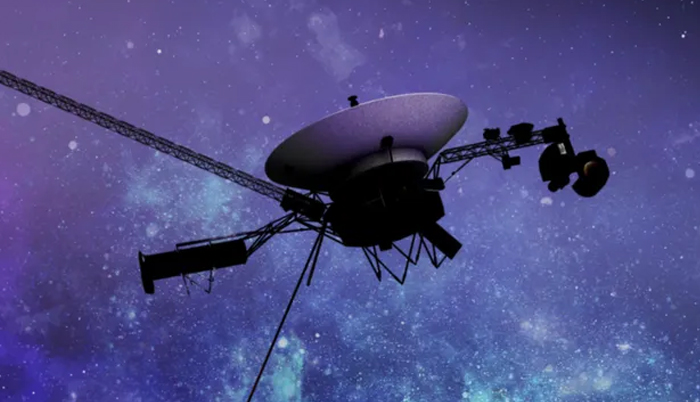![]() Home > Space & Science
Home > Space & Science
We Finally Know Why NASA's Voyager 1 Spacecraft Stopped Communicating — Scientists Are Working On A Fix

An illustration shows Voyager 1 in interstellar space. (Image credit: Caltech/NASA-JPL)
![]() April 11th, 2024 | 02:33 AM |
April 11th, 2024 | 02:33 AM | ![]() 669 views
669 views
SPACE
The first spacecraft to explore beyond the solar system started spouting gibberish late last year. Now, NASA knows why.
NASA engineers have discovered the cause of a communications breakdown between Earth and the interstellar explorer Voyager 1. It would appear that a small portion of corrupted memory exists in one of the spacecraft's computers.
The glitch caused Voyager 1 to send unreadable data back to Earth, and is found in the NASA spacecraft's flight data subsystem (FDS). That's the system responsible for packaging the probe's science and engineering data before the telemetry modulation unit (TMU) and radio transmitter send it back to mission control.
The source of the issue began to reveal itself when Voyager 1 operators sent the spacecraft a "poke" on March 3, 2024. This was intended to prompt FDS to send a full memory readout back to Earth.
The readout confirmed to the NASA team that about 3% of the FDS memory had been corrupted, and that this was preventing the computer from carrying out its normal operations.
Launched in 1977, Voyager 1 became the first human-made object to leave the solar system and enter interstellar space in 2012. Voyager 2 followed its spacecraft sibling out of the solar system in 2018, and is still operational and communicating well with Earth.
After 11 years of interstellar exploration, in Nov. 2023, Voyager 1's binary code — the computer language it uses to communicate with Earth — stopped making sense. Its 0's and 1's didn't mean anything anymore.
"Effectively, the call between the spacecraft and the Earth was still connected, but Voyager's 'voice' was replaced with a monotonous dial tone," Voyager 1's engineering team previously told Space.com.
The team strongly suspects this glitch is the result of a single chip that's responsible for storing part of the affected portion of the FDS memory ceasing to work.
Currently, however, NASA can’t say for sure what exactly caused that particular issue. The chip could have been struck by a high-speed energetic particle from space or, after 46 years serving Voyager 1, it may simply have worn out.
Voyager 1 currently sits around 15 billion miles (24 billion kilometers) from Earth, which means it takes 22.5 hours to receive a radio signal from it — and another 22.5 hours for the spacecraft to receive a response via the Deep Space Network's antennas. Solving this communication issue is thus no mean feat.
Yet, NASA scientists and engineers are optimistic they can find a way to help FDS operate normally, even without the unusable memory hardware.
Solving this issue could take weeks or even months, according to NASA — but if it is resolved, Voyager 1 should be able to resume returning science data about what lies outside the solar system.
Source:
courtesy of SPACE
by Robert Lea
If you have any stories or news that you would like to share with the global online community, please feel free to share it with us by contacting us directly at [email protected]